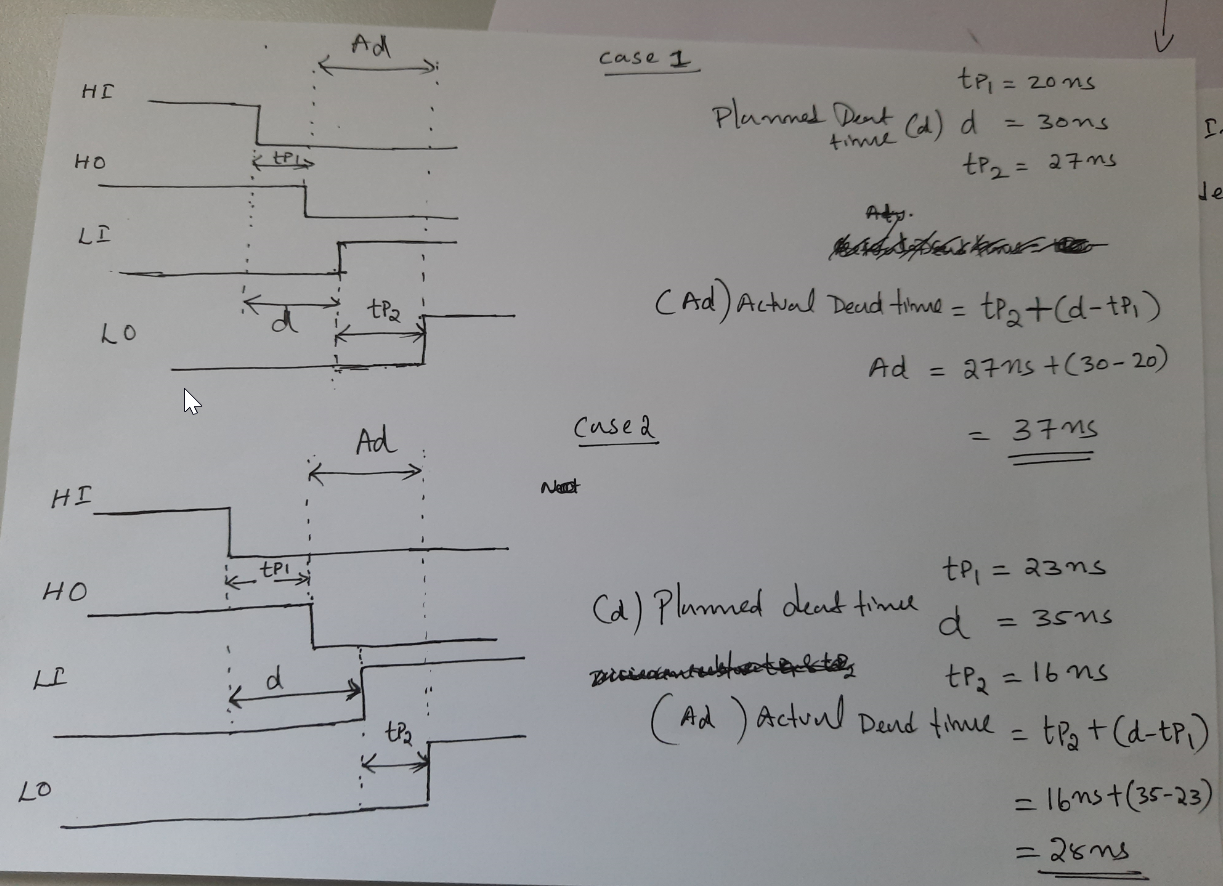Other Parts Discussed in Thread: UCC27282
Delay Matching Time Understanding:
I have below questions, kindly answer all of them.
Is it a delay introduced by driver if their propagation delays between HI-HO and LI-LO are different ?
Is this value 0ns, if their propagation delays between HI-HO and LI-LO are matched ?
Is this value 0ns, if there is a deadtime between HI-HO and LI-LO more than 7ns ?
Regards,
kiran.


